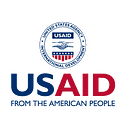Investment in Early Childhood Care and Education Centers Crucial to Quality Learning in South Africa
Investments in early childhood care and education (ECCE) centers reap broad social and economic dividends, beyond the clear benefit of providing a safe environment for children while their parents are at work.
Evidence shows that a child’s earliest years are the most critical period for development. Recent estimates suggest that more than 250 million young children globally are at risk of failing to reach their developmental potential due to poverty, inadequate nutrition, exposure to stress, and lack of early stimulation and learning. There is a demonstrated link between investments in ECCE with improved learning outcomes and longer-term economic productivity.
Despite the value of early childhood care, countries face difficulty ensuring both quality and scale in access to affordable services. In South Africa, for example, 60% of children 0–4 years of age do not attend ECCE centers. Further, South Africa spends 20% of its annual budget on education, but just 1% goes toward ECCE (compared to 67% in basic education and 35% in tertiary schools), requiring private providers to fill the gap.
Thandiwe (named changed for anonymity), the founder of a private preschool, felt compelled to address this gap in her low-income community in South Africa. “We needed a good quality education and affordable nursery school in the area as there were very few providing quality services,” said Thandiwe. Her vision for quality early childcare in her community was quickly validated. Within a year of launching her school in 2015, enrollment had expanded to more than 60 students.
To support continued growth of the preschool and improve education quality for her students, Thandiwe worked with CATALYZE EduFinance — which in turn partnered with an education service provider — to provide her with access to critical curriculum resources. She was also granted a loan through a local financial institution to help realize her overall goal of growth and improved education quality. This local lender was likewise supported by CATALYZE EduFinance through loss protection insurance that helped remove much of the loan risk.
Thandiwe said about the importance of the loan and the curriculum support, “Learning and teaching were very challenging. We had very little resources to support our day-to-day activities.” Teachers at her school lacked confidence and capacity in the classroom, and students were not being fully prepared for primary school.
Thandiwe implemented the curriculum and trained her teachers. “For me, the curriculum is the best thing that has happened to my school in all the years I’ve been running it,” she said. “With the new curriculum and learning materials, our teachers are more confident in what they are doing, and our learners are having so much fun discovering and learning. There is definitely a big improvement in how we teach our learners daily.”
Thandiwe’s experience reflects a program committed to linking capital mobilization with improved education access and quality. CATALYZE EduFinance works to increase capital available to ECCE education institutions in South Africa and other low- and middle- income countries to grow and improve the quality of their education services through injecting capital into the market to address a lack of available education-specific financing options; and by providing loss cover insurance to education lenders, thereby reducing risk associated with the lending activity and encouraging more lending to the education sector.
In the case of Thandiwe, CATALYZE EduFinance provided a layer of loss protection to a financial intermediary that is building its education lending business and seeking to generate positive impacts by ensuring that ECCEs don’t continue to suffer from financial exclusion stemming from common (mis)perceptions of risk. Providing this layer of loss protection means that financial intermediaries can lend to the education sector without taking on as much risk. This program design element is a critical step in developing a new lending methodology and building an evidence base that education institutions are credible borrowers and simultaneously can have a positive impact on the communities they serve.
Access to capital is a key catalyst for improved learner outcomes, particularly for learners in marginalized communities. By assisting ECCE providers to improve and scale their businesses through local financial intermediaries and local education service providers, CATALYZE EduFinance is supporting the development of strong ECCE sectors that are inclusive of students from low-income families and which contribute to women’s economic empowerment.
About USAID CATALYZE
USAID CATALYZE, implemented by Palladium, is an 8-year program designed to mobilize $2 billion in private capital for development impact, especially in underserved social sectors and frontier markets across the globe. Through its EduFinance program, CATALYZE mobilizes blended finance to increase private sector investment and to crowd-in private capital for schools and education enterprises, increasing access to quality education and improving and sustaining learning outcomes for disadvantaged children and youth globally.
